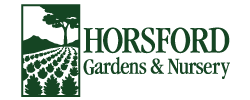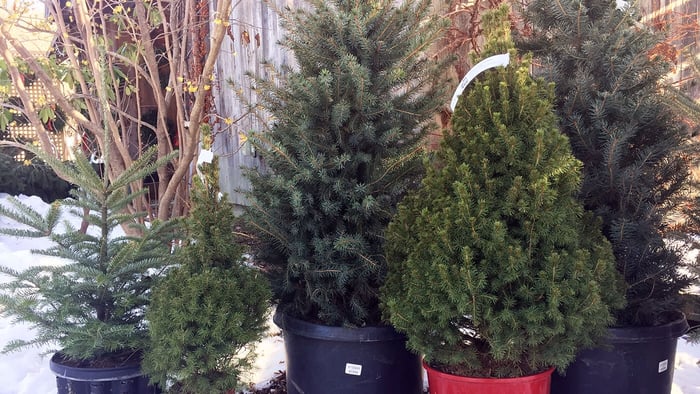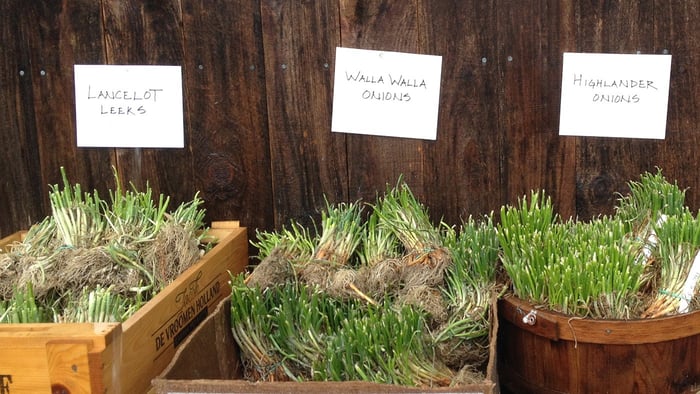
Enhancing Your Garden for Native and Honey Bees
The plants you keep and add to your garden can make a big difference to pollinators. Mason bees, sweat bees, and leafcutter bees are all species here in Vermont that live around us in unexpected places. An important (and fun!) first step in growing a garden for pollinators is identifying the plants that already live there. Do some research online or at your local library. Even better, ask an experienced gardener! Once you're ready to add to the landscape, consider not only food sources (pollen and nectar), but plants that support other elements of habitat critical to the survival of our pollinating insects. These features are what house and fuel future generations. Learn more about enhancing your garden for native and honey bees.
Important Habitat Qualities for Bees
Debris like leaves and sticks are cozy homes to many creatures so it is perfectly alright if the garden is a little messy. Eusocial bumblebees and other native, solitary bees live underground, in old nests, decaying wood, rock walls, and even gaps in patios. Naturally sandy soil is easier for them to move through. Leaving leaves and stalks from garden plants through the winter is best since hollow stems are favored winter shelter. Skip the fall cleanup and get down and dirty in the spring instead! Wait to rake and mow until late April/early May. And remember, raising the blade on the lawn mower is better for pollinators (as well as turf health).
Food Sources through the Seasons
Once you know the plants in your landscape, you can help fill in the gaps in bloom time. Having at least three blooms in the garden per season is ideal. Flowering trees and even dandelions in early spring are important. Golden rod (Solidago) in fall is another important nectar source before winter sets in.
The transitions in between seasons are when food sources are usually lacking. There are plenty of choices that will look great to humans and serve pollinators as well. Bees see white, yellow, blue and purple flowers best (as well as ultraviolet). Planting in masses helps pollinators conserve energy, and plants are more likely to have successful pollination. Native plants are ultimately preferred but some cultivars and non-native species are comparable.
Below are some suggestions for filling the gaps in your garden.
Spring
Pussy willow is an overall pollinator powerhouse, serving as both an excellent food and host source. Tolerates urban environments, salt, and is deer and rabbit resistant. Helpful for erosion control and is low maintenance.

Lowbush blueberry (shrub) - Sun: Full sun/part shade, Soil Types: Average/dry
Low-bush blueberry is fragrant, low maintenance, and yields edible berries for wildlife and humans! Can handle urban environments and is drought tolerant once established.

Serviceberry (deciduous tree) - Sun: Full sun/part shade, Soil Types: Versatile - wet/average/dry
Serviceberry checks all the boxes as a food and host plant, providing early season flowers and nutritious berries for birds and other wildlife. Beneficial to humans as well, it is a beautiful ornamental tree that is drought and salt tolerant, deer and rabbit resistant, and has beautiful fall foliage.

Golden Alexanders (perennial) - Sun: Full sun/part shade, Soil Types: Average/wet soils
Plant this host perennial in mass or in the native plant garden. Very low maintenance and beautiful fall foliage.

Foxglove beardtongue (perennial) - Sun: Full Sun/part shade, Soil Types: Average/dry
This host plant attracts all types of pollinators and bees look pretty adorable hanging out of their trumpet-shaped flowers. Drought-tolerant once established and tough as nails.
Summer

Bearberry (ground cover) - Sun: Full sun, Soil Types: Average/dry
This low-growing ground cover has evergreen foliage that persists through winter. Bees and songbirds enjoy the flowers and fruits. Helps control erosion, is salt and drought tolerant, and resistant to deer and rabbits.

Wild geranium (perennial) - Sun: Full sun/part shade, Soil Types: Average/wet
Wild geranium blooms a long time, making it an excellent transition plant between the spring and summer seasons. A host plant for bees and butterflies. Low maintenance and deer and rabbit resistant.

Wild Lupine (perennial) - Sun: Full sun/part shade, Soil Types: Average/dry
This late spring/early summer bloom looks beautiful in masses along roadsides, in meadows, and your garden. Wild lupine is drought tolerant, deer and rabbit resistant, and attracts bees and butterflies alike.

Butterfly weed (perennial) - Sun: Full sun, Soil Types: Average/dry
Brilliant orange flowers that bees, hummingbirds, and butterflies flock to. Doesn't mind an urban environment. Will reseed in sandy soils and meadow settings.

Black Cohosh (perennial) - Sun: Part shade/shade, Soil Types: Average/dry
Fragrant and floral spikes add height to the shade garden and attract bees and other pollinators. Low maintenance and drought tolerant.

Chokeberry (shrub) - Sun: Full sun, Soil Types: Average
An excellent shrub that doesn't mind our local clay soils. There are low-growing and taller varieties for any spot in the garden. Petite white flowers are followed by nutritious berries. Beautiful red fall foliage makes this a good alternative to burning bush.
Fall

Fall-blooming witch hazel (shrub) - Sun: Full sun/part shade, Soil Types: Average/wet
This shrub alone is host to 68 species of butterflies and moths! We love its yellow flowers just as the garden is winding down for winter.

Smooth aster (perennial) - Sun: Full sun/part shade, Soil Types: Average/dry
Pairs well with other meadow plants and is a pollinator powerhouse. Look for the aster planting at Horsford's behind the greenhouses. Asters are tough in urban environments and drought tolerant once established.

Canada burnet (perennial) - Sun: Full sun/part shade, Soil Types: Wet
Funky frilly blooms emerge over clumps of interesting foliage late summer into early fall. Perfect for wet areas or rain gardens, this perennial is salt tolerant and thrills both bees and butterflies.

White Turtlehead (perennial) - Sun: Full sun/part shade, Soil Types: Wet
This perennial gets its common name from the shape of its fall bloom. Attractive to bumblebees and other pollinators, white turtlehead is deer and rabbit resistant and will brighten up your part shade garden.
Ecoregions and Native Plants
Many customers ask if a plant is native to our area. The EPA has an informative map that identifes ecoregions by geographic location. Vermont falls into the Eastern Great Lakes and Lowlands Region. All plants listed above are native to this and other ranges. Visit the map to learn about surrounding areas.
Written with contributions and photographs from friend of the nursery, Tori Hellwig. In addition to working at the nursery for many years, Tori obtained a Master of Science in Natural Resources from the University of Vermont. Her Master's project explored enhancement of habitat for wild bumblebees, where her passion for all native bees and honeybees grew in the process.



